El Nino and La Nina
-
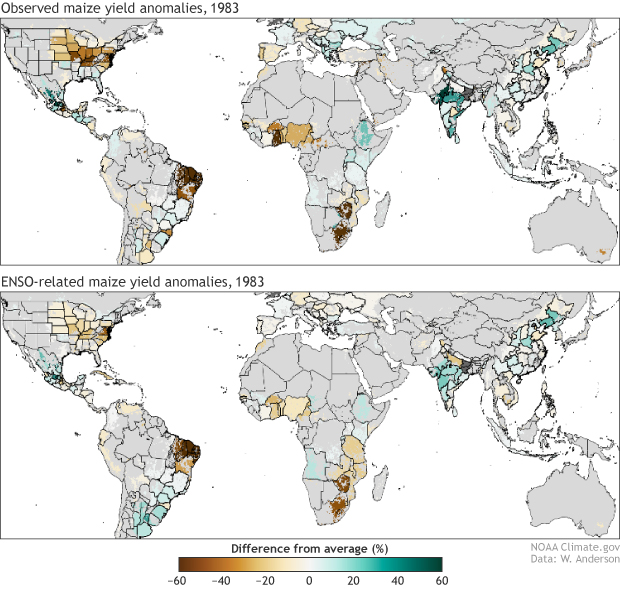
In this blog I tend to focus on the relationship between the phase of ENSO (El Nino or La Nina or neutral) and what climate conditions are likely to happen here in the Southeast as well as how those conditions will affect our crops. But ENSO actually affects weather across the whole globe, so if…
-
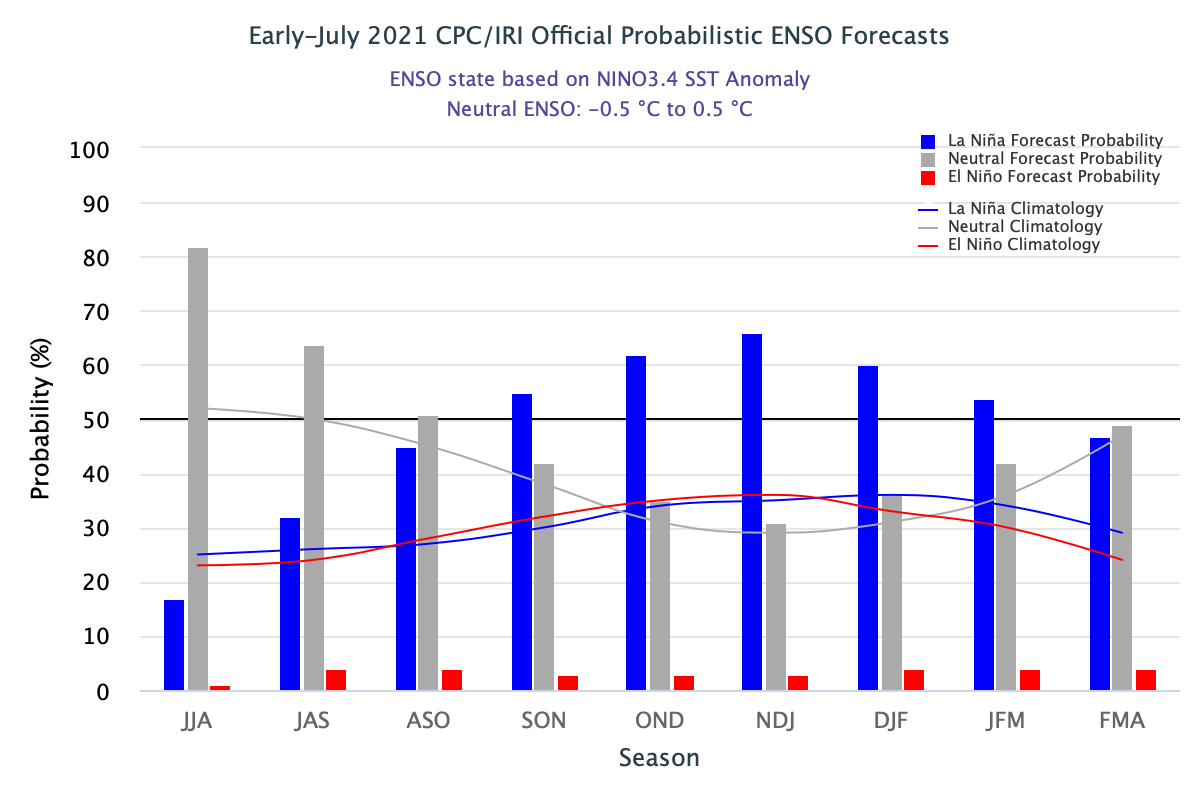
We are in neutral conditions now, but this week NOAA forecasters issued a La Niña Watch, indicating that they think La Niña will likely return in the September through November period and last through next winter. Although El Niños seldom last for more than one winter, it is not at all unusual for La Nina…
-

The latest ENSO outlook issued by IRI at Columbia University today shows that the chance of returning to a La Nina in fall after a summer of neutral conditions has increased. Their official probabilistic forecast shows that La Nina is likely to return by the October through December period. You can read their report at…
-
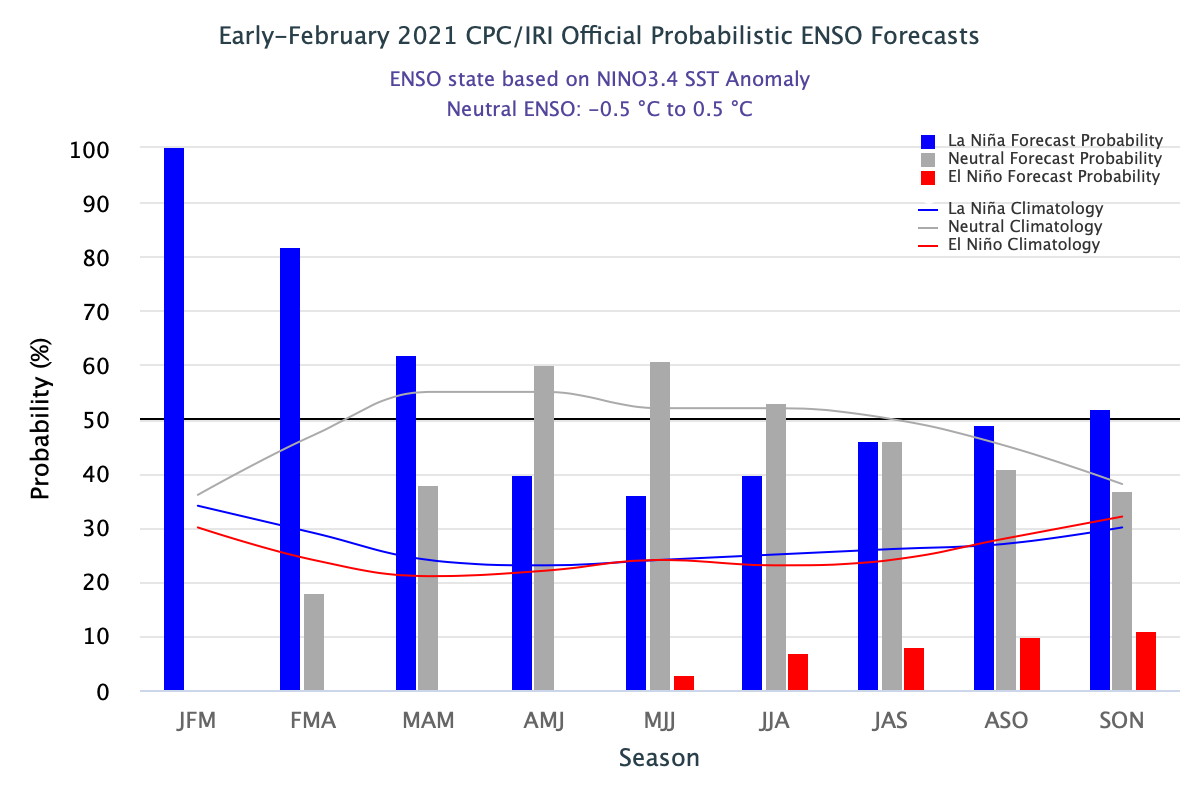
You might remember that the forecast for ENSO for this year was for La Nina to go away during the summer but potentially return in the fall. This is called double-dipping, since we have two years in a row with a La Nina. It happens from time to time with La Nina but almost never…
-

According to the latest ENSO blog by NOAA, La Niña is now officially over and we have returned to neutral conditions as of May 13, 2021. NOAA forecasters estimate about a 67% chance that neutral conditions will continue through the summer. The ENSO forecast for the fall is less confident, with odds of a second-year…
-
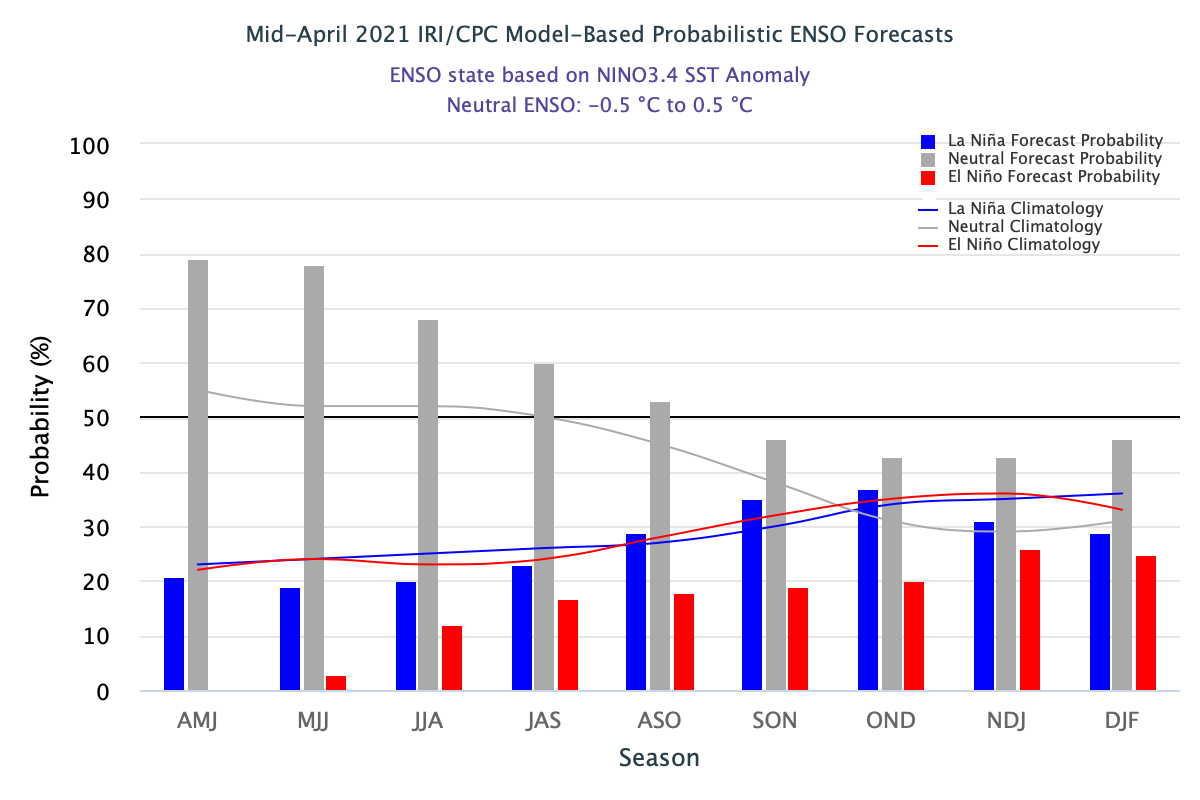
The latest ENSO advisory from NOAA’s Climate Prediction Center this week show that while La Nina is barely holding on, it is expected to be gone in the next month, and neutral conditions have an 80 percent chance of occurring in the May through July period. While temperatures in the Eastern Pacific Ocean are still…
-
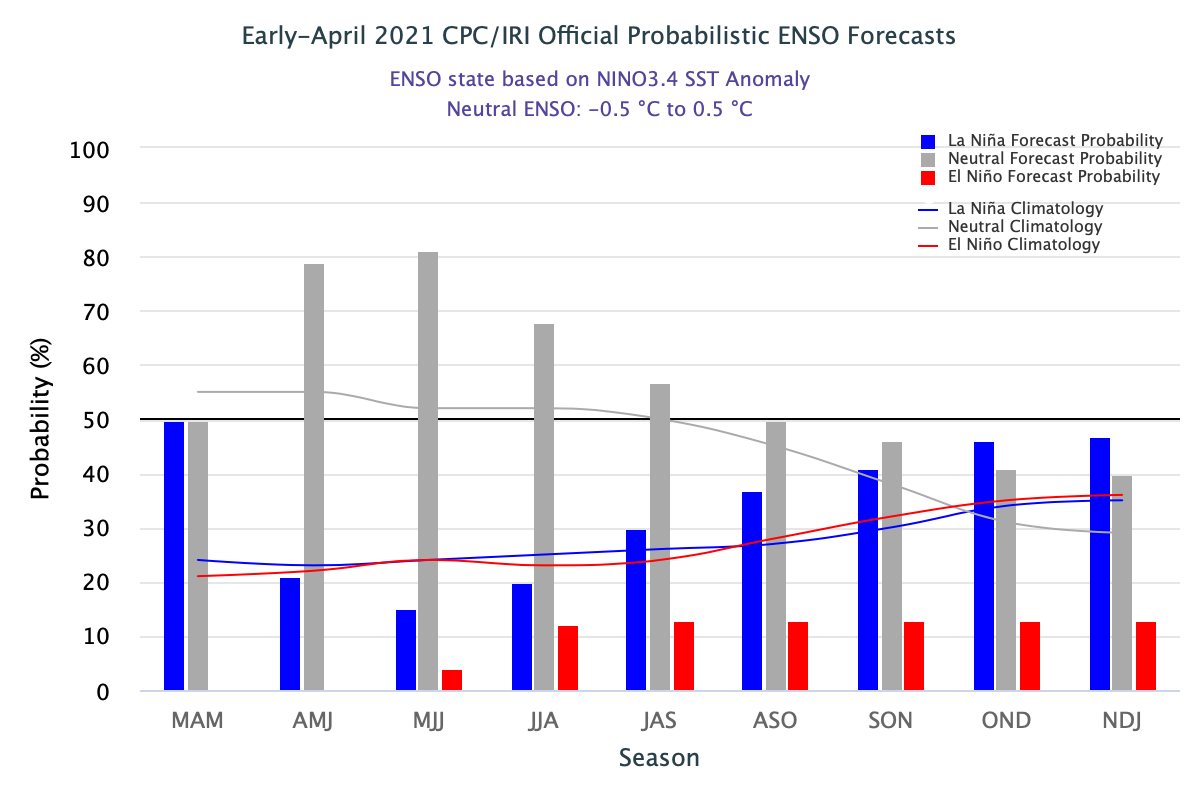
NOAA released their early April outlook for ENSO earlier this week. It shows that La Nina is barely hanging on and is expected to transition to neutral conditions over the next few months. What does this transition mean for the upcoming few months? While spring can be tough for predicting what will happen with ENSO…